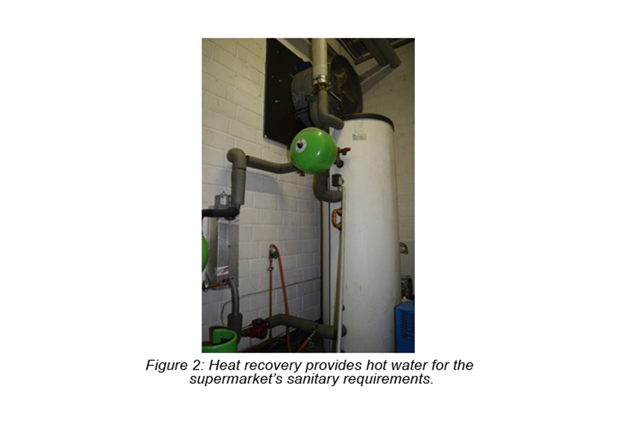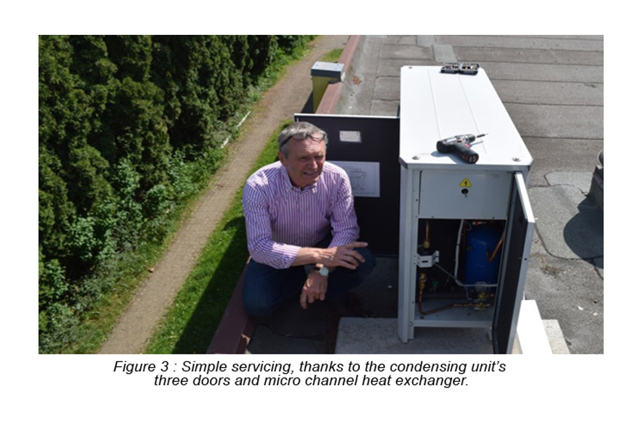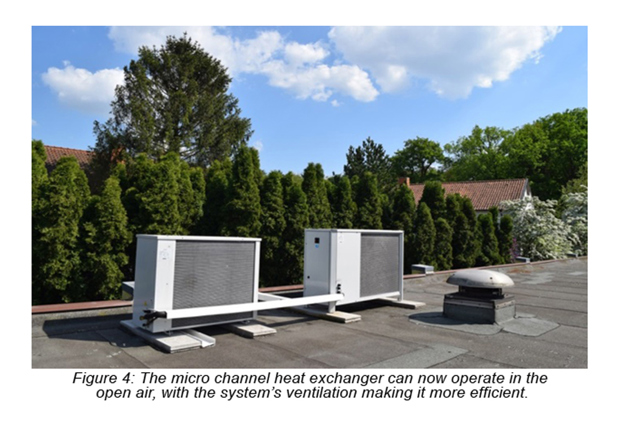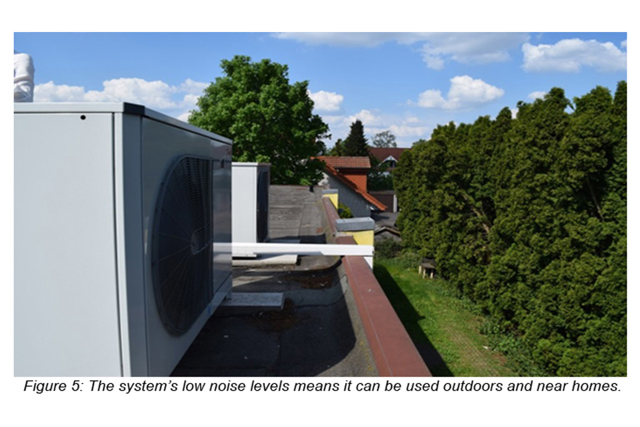For tens of thousands of convenience stores and supermarkets in Europe, the time has come to modernize their commercial refrigeration systems. It's a chance to reconsider systems with an eye to newly available technologies and return on investment. The best condensing unit technology currently available was installed in a supermarket in Osnabrück for this purpose.
Gastronome is a 620 m² supermarket with 2 cold rooms, 4 12-meter covered, horizontal display cabinets for meat and fish and 4 other 14-meter vertical display cabinets for various fresh products.
Until October 2014, each of these units and the cold rooms ran on an independent cooling circuit with an evaporator and condensing unit in a machine room, using R404 and R22. This had the drawback – especially in the summer months – that the waste heat from the condenser of the display cabinet was discharged directly into the retail space. They are now powered by two variable-speed Optyma™ Plus INVERTER condensing units using R407F located out of the building. According to the German F-Gas Regulation, R407F may – unlike the R404A refrigerant that was used previously – also be used beyond the year 2020, because its GWP value (Global Warming Potential) is significantly below 2500.
Each of the two Danfoss Optyma™ Plus INVERTER units is set to a dedicated suction pressure, meaning that the associated cold room and display cabinets are able to operate at their optimal temperatures. Supermarket manager Viktor Jersch has noticed multiple benefits. The installation is more compact and we have low-cost operation and maintenance. New display cabinets can be added without the need to resize the refrigeration system: both condensing units can cool a larger surface area.
Description of the Installation
The second refrigerant that was used in the past, R22, is already blacklisted. One particular advantage of the installed condensing units with integrated speed control for the compressor and the condenser fan is the flexibility in terms of being able to adapt immediately to different loads. As soon as the solenoid valve closes the circuit of one of the refrigeration appliances which no longer requires cooling, the condensing unit registers this fact with reference to the falling suction pressure. The condensing unit records this information through the integrated sensor system – two suction pressure transducers for low and high pressure, and three temperature sensors. In so doing the condensing unit adjusts the speed of the compressor. In this case the speed is reduced. This causes the suction pressure to rise again, meaning that it always remains constant. The effect is the opposite if a refrigeration appliance is switched on: the suction pressure increases, the compressor runs faster (30% to 100% speed is possible) and constant suction pressure is achieved once again.




